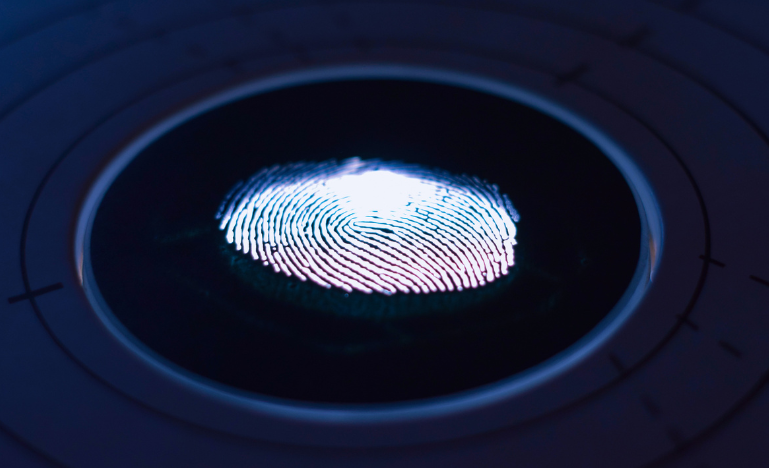Canada needs to fix its post-conviction disclosure catch-22
A lack of access to police investigative material is a significant challenge that innocence organizations face in their efforts to advocate for wrongful conviction claimants.

When William Stinchcombe, a Calgary lawyer who was accused of fraud and theft, stood trial, he knew there was evidence in the police file which could help his case: Taped conversations with his former secretary, that he was forbidden from hearing. He went to court, arguing that the lack of disclosure hurt his chances of a fair trial. In 1991, the Supreme Court agreed, ruling that such a failure of disclosure harms Canadians' right to a full answer and defence.
"The absolute withholding of information which is relevant to the defence can only be justified on the basis of the existence of a legal privilege which excludes the information from disclosure," the Supreme Court ruled in 1991. The case set the standard for disclosure between prosecution and defence. Anything relevant, either exculpatory or inculpatory, must be shared.
As fundamental as the Stinchcombe standard is, important evidence is still often kept from defendants at trial, putting Canadians, particularly racialized and Indigenous people, in danger of being wrongfully convicted.
In a new report, the University of British Columbia's Innocence Project argues that the lack of transparency is actively getting worse.
The report, Post-Conviction Disclosure in the Canadian Context, funded through the Canadian Bar Association's Law for the Future Fund, attempts to diagnose the issue and offer some solutions.
Tamara Levy and Alexandra Ballantyne, the authors behind the report, have faced their own challenges. It's been "15 years of banging my head against a brick wall, trying to get information," says Levy.
The UBC Innocence Project found repeated instances of witnesses who were not adequately interviewed, evidence that had not been forensically tested, and experts never called upon to testify but who could have provided illuminating information.
"It's rare that you find a smoking gun in the file, and you say, 'Oh, my God, there was an alternate suspect this whole time!'" Ballantyne says. Sometimes, however, "there's a thread, and as you unravel it, you go down the path of investigation… that's the work that happens at innocence projects around the world: How do we unravel these threads and get to the truth?"
According to Levy and Ballantyne, a review of the complete police investigative file is essential in wrongful conviction cases. That includes all records from the original investigation, any additions made post-trial, and access to the actual exhibits.
Law enforcement officials often suffer from tunnel vision, which can be informed by their unwavering conviction in the guilt of a suspect" They then decide relevance based on that belief — "never mind that someone saw a different car at the scene of the crime. That's not important because we have a witness who says they saw a blue car and his car was blue," Levy explains.
Even after the Stinchcombe ruling, the Crown withheld important information about jailhouse informants in Morin's conviction — information they may not have considered "relevant," as per the disclosure test set out by the Supreme Court.
Of course, it's the police making that relevance determination, says Levy.
Making matters worse, criminal investigations in the modern age are growing increasingly complex. Case files are getting thicker, full of forensic evidence and online leads. Police are unwilling or can't chase down every promising avenue of investigation, and defense counsel often find themselves overwhelmed by the sheer magnitude of the "pertinent" disclosure during trial proceedings.
Fully disclosing the entire police file at trial is one thing -- all the more so after a guilty verdict, say Levy and Ballantyne. Yet there is no formal mechanism to access the entire investigative file, even after the case is over.
There are disparities in disclosure practices across the country, Ballantyne says. Notably, in Ontario, where a higher prevalence of wrongful conviction cases has been documented, prosecutors and police have shown a greater willingness to "play ball" and disclose crucial evidence. In British Columbia, however, the RCMP appears to be growing more resistant to disclosure, according to Ballantyne and Levy. Lately, it has said it would only disclose something subject to the filing of a ministerial application, or a court order, Levy says. "That really is a huge challenge for us."
The catch-22 for the wrongfully convicted is that successfully appealing their conviction requires fresh evidence supporting their application. But, "there is no corresponding statutory obligation which compels Crown counsel or police organizations to provide this disclosure," Ballantyne and Levy write.
For now, the most reliable way to get the complete investigative file is to formally apply to the minister of justice, who can forward the file to the Criminal Conviction Review Group, commonly called the 696 Review Process. But potential petitioners first have to exhaust their appeals, and the most effective way to pursue an appeal is to obtain new evidence. Despite multiple commissions of inquiry flagging the predicament, the Canadian government has yet to take concrete measures to resolve the issue.
In 2021, the B.C. Court of Appeal granted an application to force the RCMP to furnish a convicted man with evidence so that it may be tested for DNA. In the case, R. v. Roberts, the court created a straightforward test to force that kind of disclosure.
"While that process may occasionally result in costly and ineffectual review of well‑grounded convictions, it is established with the intention of giving effect to the fundamental precept that the innocent must not be convicted," the court wrote.
Tony Paisana and Mark Iyengar, who acted for the appellant, said at the time that the decision reinforced the "constitutional right to access investigative materials in the hands of the authorities where the threshold is met, and enforce this right in court if disclosure is improperly denied."
On paper, Roberts offers a remedy for the very problem that Levy and Ballantyne have identified. That process, however, is "time-consuming and expensive," they write.
Lawyers at the UBC Innocence Project, and other lawyers pursuing wrongful conviction cases, often resort to applications under the Access to Information Act and Privacy Act. While Canada's ATI regime was once heralded as one of the best in the world, years of underfunding and neglect have turned the system into a slow, unreliable mess.
According to Levy, she recently received a letter responding to one of her Access to Information requests dating back to 2014: "Nine years ago!"
"'Freedom of information' is just such a misnomer, because of the lack of a timely fashion in which you get it."
What's more, the pair have found that the Privacy Act is actually being used to thwart useful and necessary disclosure.
"The Privacy Act. In this particular circumstance, it didn't contemplate being used in a criminal context," Levy says. In some cases, the government asserts third-party privacy concerns over investigative files that are a quarter-century old.
When Justice Harry LaForme investigated possible reforms to address Canada's handling of miscarriages of justice, he heard from police who warned against creating "massive file disclosure obligations and drain on scarce human and financial resources."
Yet LaForme explicitly recommended a disclosure regime that, with appropriate safeguards, supersedes both the Privacy Act and the particular concerns of police, such as the protection of confidential sources. "The public interest in investigating claims of miscarriages of justice requires no less," he wrote.
Bill C-40, which puts LaForme's recommendations into action, contemplates a Miscarriage of Justice Review Commission, with full investigative powers to call witnesses and produce evidence. It does not, however, grant it full powers of investigation under the Privacy Act (although such a change could be made by regulation.)
Levy says that legislation, currently awaiting second reading in the House of Commons, is a "glimmering light" on the horizon. She says that if the new commission can compel evidence disclosure, that would be a win. "As long as we get it, I don't care how we get it," she says, adding that advocates working on behalf of applicants need to be the ones with access to the information.
Levy and Ballantyne offer a raft of ideas, from better policies, more research and broader whistleblower protections. They even suggest that the government could compile a list of common tropes that denote a miscarriage of justice. Still, their proposal for a new disclosure regime is relatively straightforward.
"The [Criminal Conviction Review Group] CCRG should order full disclosure of the Crown and police investigative files without the requirement that the applicant first identify new matters of significance."
Canada's disclosure regime is expansive but more deferential to accused individuals than the U.S.' Brady rule, which only covers potentially exculpatory evidence. Yet even changes covering a small number of convictions could have substantial effects on those facing systemic inequities in the justice system.
"There's the real human costs. We have had applicants who have died waiting, you know?" Ballantyne says. She adds: "We have clients who have remained in jail for 15, 20 years. And their children have grown up, they have grandkids now, and they weren't there for the birth. They've missed this entire section of their lives because we've been waiting and working."
That burden is disproportionately felt by Black and Indigenous people, who are, as former Supreme Court Justice Frank Iacobucci has written, at "higher risk of being wrongly arrested, wrongly convicted, and wrongly imprisoned."
Take one of the most famous cases of wrongful murder convictions in Canada. While there was a litany of problems with Donald Marshall Jr.'s trial, things got even worse after his conviction when a witness gave police critical information about the real killer — exonerating Marshall. Police kept it to themselves.
"The human cost is such a huge factor that I think is often not talked about enough," Ballantyne says. "Because, in the minds of a lot of people, this is a convicted murderer. But at the end of the day, if they're exonerated, what does that actually mean? And what happens then, right? Compensation, if they get it, which is a big if, is never going to replace all of the time that's been lost."
The less time the wrongfully accused spend behind bars, the better.


